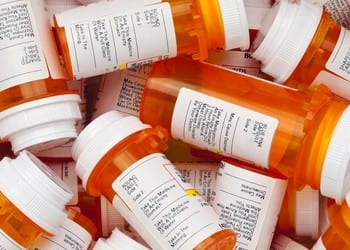ANNAPOLIS, MD—The number of opioid prescriptions in Maryland has dropped by more than 22 percent since 2017, with nearly 20% fewer patients receiving opiates during the same period, the Hogan administration announced on Friday.
This decrease is attributed, in part, to an electronic prescription tracking system known as the Prescription Drug Monitoring Program (PDMP).
The PDMP—operated by the Maryland Department of Health (MDH)—is a secure data platform that collects and presents information about prescriptions containing controlled drugs, like opioids. This data allows health care providers to make more informed clinical decisions, helping to prevent drug misuse while preserving patients’ legitimate access to prescription pain relievers and other controlled drugs.
“Since day one, our administration has been committed to shining a spotlight on the heroin and opioid epidemic and using every tool at our disposal to focus on this crisis, and to bring a heightened level of awareness to this threat, which is tearing apart families and devastating communities,” said Governor Hogan. “While we have bent the curve downward on over-medication and misuse, we must continue working together with an all-hands-on-deck approach in order to save thousands of lives.”
The Hogan administration has committed more than $1 billion to combat the heroin and opioid epidemic. Substance abuse spending has more than doubled since Governor Hogan took office, with spending on substance use disorder residential treatment alone increasing by nearly 500% since FY16.
According to PDMP data released today, the number of opioid prescriptions in Maryland has dropped to about 2.8 million in 2019 from nearly 3.7 million in 2017. The number of patients receiving opioid prescriptions during that time decreased from over 1 million to about 826,000.
“We are confident that armed with accurate data and support, practitioners will find the balance between prescribing life-saving drugs when necessary and avoiding over-medicating patients with addictive substances,” said MDH Secretary Robert R. Neall.
To further partner with practitioners, MDH recently created the Office of Provider Engagement and Regulation (OPER). This office will work closely with authorized controlled substance prescribers and pharmacists to enable easy access to PDMP data and encourage alignment with best practices. The office also shares information with health care providers about substance use disorder treatment, co-prescribing naloxone to reduce the number of fatal overdoses, and ongoing opioid risk reduction initiatives.
“We want to support providers in delivering quality care to Maryland patients, not stop them from prescribing or dispensing medications that many patients need,” said OPER Director Kate Jackson. “Our outreach is expanding to include professional education, promoting resources and tools to enhance informed medical decision-making in connection with therapies involving controlled substances.”
“Recently released PDMP data show a substantial and promising decline in the total amount of opioids reaching Marylanders,” said Steve Schuh, executive director of the state’s Opioid Operational Command Center. “Today’s trends indicate the medical profession has done an outstanding job of altering prescribing practices to better align with the needs of patients.”
Learn more about the State of Maryland’s efforts to combat the opioid and heroin epidemic at beforeitstoolate.maryland.gov.
Do you value local journalism? Support NottinghamMD.com today.

